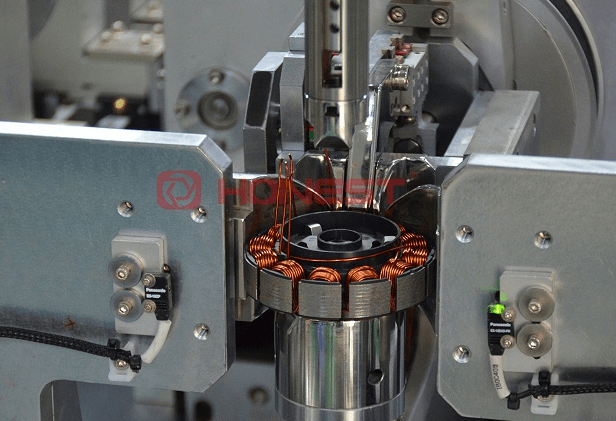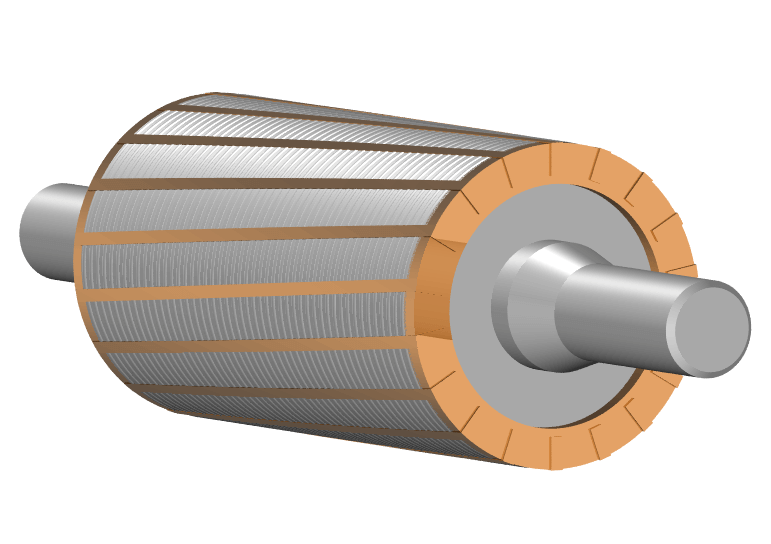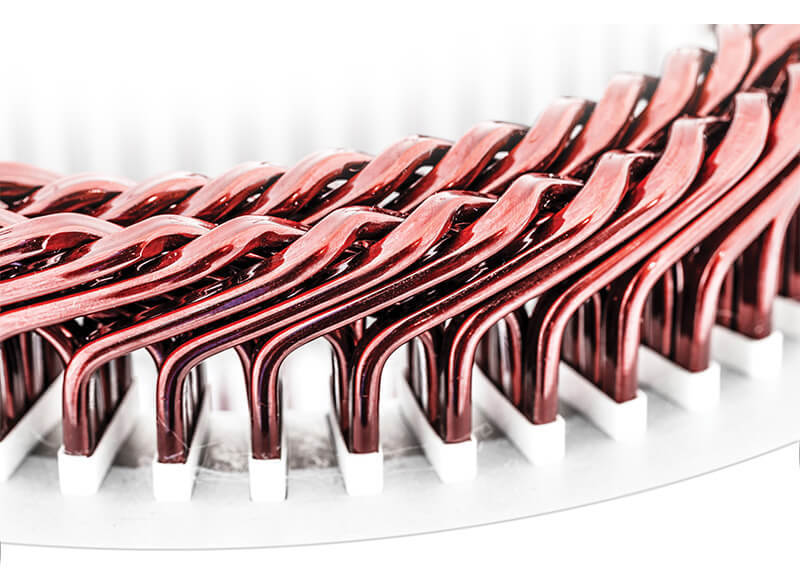
News Center
Efficient and Precise: Stator Production for Blower Motor Automated Production Line
Published on.
2024-08-08 10:53
Source
Introduction to Blower Motors
Blower motors, converting mechanical energy to gas pressure, are essential in various industries such as wastewater treatment and metallurgy. Their primary function is to provide the necessary gas power for these industries.
Blower motors come in two types, differentiated by their working principles: impeller type and volumetric type. The impeller-type blower increases or decreases the fluid pressure through the rotation of the impeller and the work done by the blades on the fluid, which can be further classified into axial-flow, centrifugal, and mixed-flow types. The volumetric type blower, on the other hand, efficiently transports gas through the relative motion of the rotor within the cylinder.
With the increasing demand for energy-efficient equipment in the industry, the market demand for blower motors is also growing day by day.
Introduction to HONEST Intelligent Equipments’ Blower Motor Automated Line - Stator Section
Discover the precision and innovation in HONEST Intelligent Equipments’ automated stator line, where advanced technology meets meticulous design. We have adopted advanced double-speed chain and pallet conveyor technology to ensure the efficiency and stability of production. Our production process, from manual loading to finished product unloading, is meticulously designed at every step.
The details are as follows:
Core Insulation Frame Loading and finished product unloading machine
The equipment utilizes precise technology to integrate the core with the insulation frame and employs an automatic CCD inspection mechanism to ensure that there are no omissions or misplacements during the assembly process, thus guaranteeing the consistency and reliability of production quality. Additionally, to ensure the safety of manual operations, safety light curtains are equipped to effectively prevent potential safety hazards.
Terminal Pressing Height Inspection Machine
Firstly, the pre-assembly fixture guides the terminal into place, and our servo press meticulously records each pressing curve. Subsequently, the conveying mechanism accurately inserts the terminal into the core assembly. The servo pressing mechanism is responsible for pressing the terminal to a specified height and recording the pressing curve; these critical inspection data are uploaded to the industrial control system for analysis and record-keeping.
After the pressing is completed, a height sensor conducts a final height inspection of the terminal to ensure it meets the design specifications. The entire inspection process is highly automated and can provide real-time feedback on the quality of the terminal pressing. Qualified products are placed into tray fixtures and moved to the next workstation, while defective products are automatically discharged, thereby ensuring the overall quality and production efficiency of the products.
Dual-Station Flying Fork Winding Machine
Before the winding process begins, our dual-station machine conducts a thorough check, ensuring every component is in perfect alignment. Prior to the operation of the winding machine, sensors are used to check for any missing core components, defective products entering, or improper placement of components. In the event that any abnormality is detected, the machine will automatically return the tray to the manual loading area, allowing operators to promptly remove defective products and replace them with new core components.
Once the sensors confirm that the materials are in place, the machine automatically performs operations such as winding, hanging wire, and changing slots. Throughout the entire winding process, the servo tensioner plays a crucial role by monitoring and adjusting the tension in real time, ensuring that the tension for winding and hanging wire strictly adheres to preset standards. Additionally, the machine is equipped with an automatic wire break alarm device to prevent production interruptions or quality defects.
Terminal Welding Machine
The transfer mechanism precisely aligns the core assembly for pre-clamping, setting the stage for a seamless welding operation. The role of the pre-clamping unit is to ensure that the terminal is properly closed before welding, providing a stable foundation for the welding process.
After the clamping is completed, the transfer mechanism then delivers the core assembly to the welding unit, where the terminal is precisely welded onto the core. The entire welding process is carried out at high temperatures, which may generate smoke and gases. An exhaust system is equipped to remove the smoke, ensuring a clean working environment.
Once the welding is completed, the conveying mechanism retrieves the core assembly that has undergone welding and accurately places it onto a double-speed chain pallet fixture. Subsequently, the equipment automatically transplants the pallet fixture to the next workstation.
This automated welding technology not only improves efficiency but also ensures the consistency and reliability of welding quality through precise control and monitoring, laying the foundation for the stable performance of the motor.
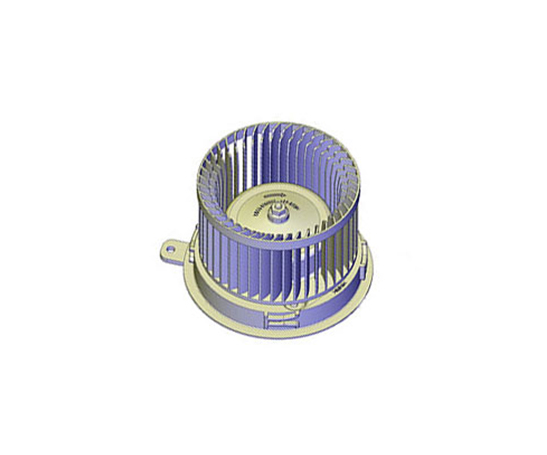
Stator Performance Testing Machine
The Stator Performance Testing Machine stands as the guardian of quality, conducting a series of automated tests to verify each stator’s adherence to stringent specifications. Once the stator core assembly is properly positioned, a series of automated electrical performance tests are initiated. The tests include measurements of key parameters such as resistance, inductance, winding insulation, withstand voltage, and insulation resistance to ensure that the stator's electrical properties meet the design specifications.
During the testing process, the equipment continuously monitors and records data. If any parameters that do not conform to the standards are detected, the system will automatically issue a judgment signal, thereby achieving real-time monitoring of product quality. After the test is completed, the stator assemblies that pass the test will move to the terminal correction mechanism for terminal adjustment, ensuring that the position and shape of the terminals are optimal. If a stator assembly is judged to be non-conforming during the testing process, it will be automatically removed from the production line to prevent defective products from entering the next production phase.
The Advantages of HONEST Intelligent Equipments’ Automated Line
1. Data Traceability: By combining handheld barcode scanners with RFID technology, we have achieved full traceability from raw materials to finished products. This system not only improves the efficiency of logistics management but also enhances the transparency of quality control, allowing for rapid identification and tracking of any quality issues.
2. Quality Control: The precise control of servo motors, in conjunction with intelligent anti-error mechanisms and the strict testing of precision measuring instruments, collectively ensures that products at every production stage meet high-quality standards.
3. High Level of Automation: Our production line is highly automated, covering everything from automatic loading and unloading to automatic welding, and from the automatic identification of defective products to their ejection. This level of automation not only reduces manual intervention and production costs but also improves production efficiency and product consistency, reflecting the cutting-edge technology of Industry 4.0.
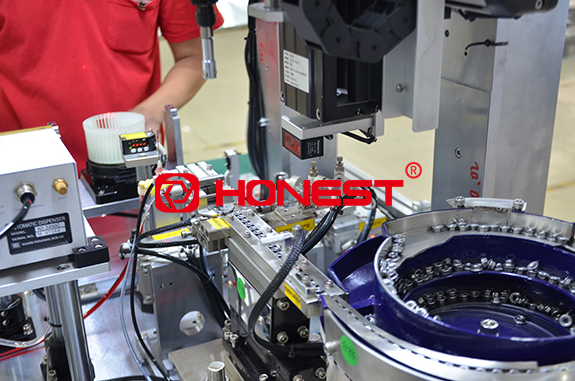
These advantages together form the core competitiveness of our production line, ensuring that we can continue to provide customers with high-quality, high-efficiency products and services.
HONEST Intelligent Equipments, since its establishment in 2007, has become a leading supplier of motor automation equipment solutions in China through its persistence in technological innovation and integrity in business operations. The company is deeply involved in the field of automotive motor equipment automation and has a team of more than 100 senior engineers with over 10 years of professional experience, covering various professional fields such as product process, mechanical design, electrical design, and software development.
The company has established a standardized design platform and continues to promote digital construction to improve design quality and efficiency. HONEST Intelligent Equipments also actively promotes the IATF16949 and ISO9001 technical specifications, continuously improving project management levels through institutionalized and process-oriented management, and is committed to providing customers with better products and services.
If you need blower motor production equipment or production lines, please feel free to contact us at any time. Look forward to hearing from you
Related News
